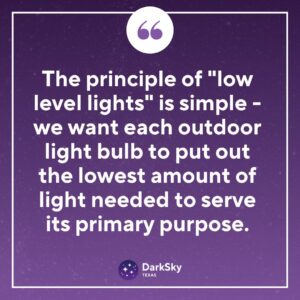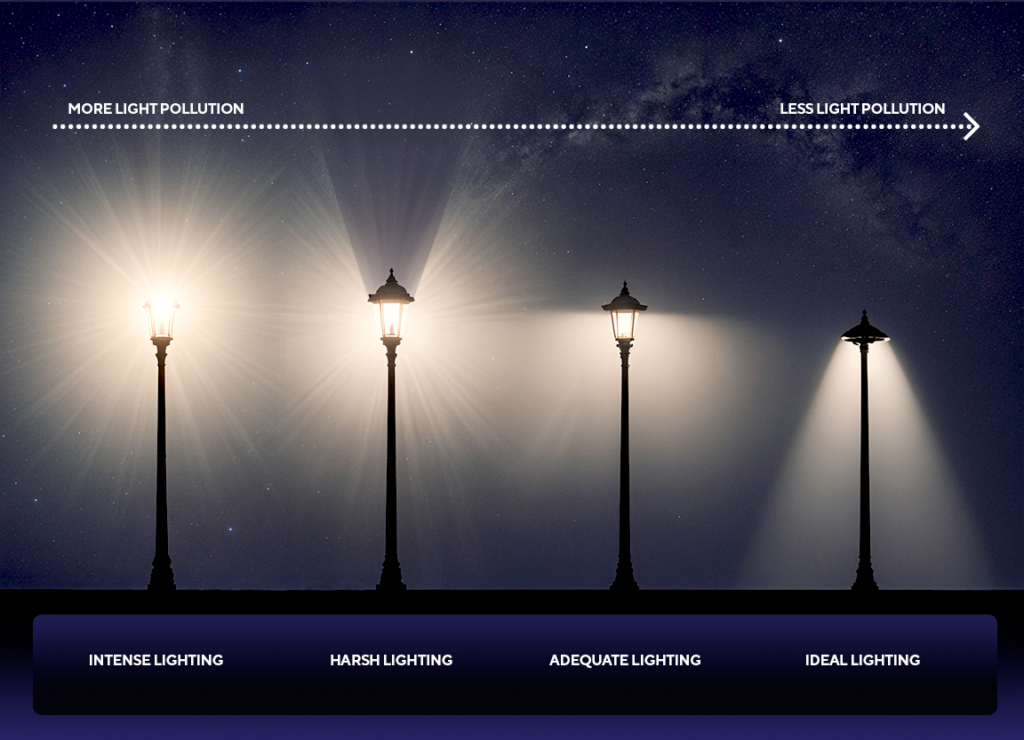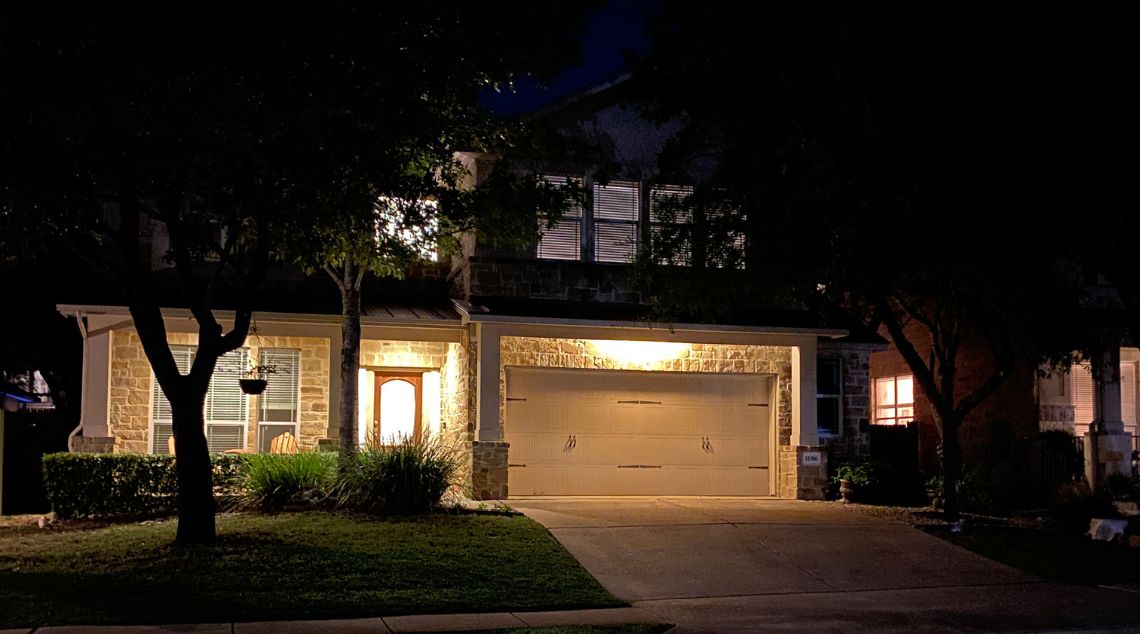Over the past 50 years, night lights have radically changed how we work, play, and sleep – unfortunately, not all lights are used responsibly. In fact, it is estimated that up to 23% of the world’s landmass is now affected by some sort of light pollution.
As skyglow expands, so does its impact on the local wildlife and our health. And for the first time in history, our children are now unable to see some of the same stars that remained unchanged for millennia before.

Why Do We Need to Use Outdoor Lights Responsibly?
It would be impossible to reverse the clock and bring back the darkness of the pre-industrial era. Instead, DarkSky Texas believes the answer lies in responsibly using outdoor lights. Our slogan says it briefly as “Better Lights for Better Nights.” In this way, we can minimize our lights’ impact on the surrounding landscape – while preserving the many dark sky havens we have around the state.
In previous blog posts, we’ve explored the full impact of ensuring our lights are both useful and targeted. Now is the time to use the capabilities of our existing lights while keeping them as low-level (and economical) as possible!
How Can We Reduce the Amount of Light We Use?
The principle of “low-level lights” is simple: we want each outdoor light bulb to put out the lowest amount of light needed to serve its primary purpose.
Determining this will require a bit of fiddling around, as well as some careful calibrations. Any adjustments you make to the intensity of your lights will need to take into account its original purpose and direction – which is why this principle should be taken as a “third step” in our quest for responsible outdoor light usage.
For each light source, we must ask:
- Can this bulb’s brightness be reduced while remaining useful?
- Is there a way to adjust this bulb’s intensity or dim it partially when needed?
- If I switch this light to a lower-wattage bulb, will I still be able to accomplish my task?
- Are there any smooth or reflective surfaces around that increase the light’s intensity?
When experimenting with light levels for porch lights, we have found that lowering the wattage (and therefore the number of lumens or amount of light), allowed people to see well beyond the porch. Rather than just seeing the brightly illuminated porch with dark shadows, you can see the porch and the area that would have been in dark shadows if the light was brighter. This helps us see better and feel safer.
Good examples of low-level outdoor lights
The tricky part about this principle is that “low level” will depend on the purpose of your light installations. Good examples of outdoor lights that go down to their lowest level while remaining useful (and, of course, need to be off when no one is using them) include:
- Solar-powered path lights that emit a soft glow to guide walkways – just enough to prevent accidents
- Dimmed porch lights that provide visibility without overpowering the area
- Low-wattage landscape lights used to subtly highlight plants or features
- Motion-activated security lights with adjustable brightness settings
- Reflectors around a pool illuminate the edges without glare when reflecting on the water.

Want to Help Us Fight Light Pollution Around Texas? Join Our Cause!
Embracing responsible outdoor lighting practices offers a unique opportunity to tackle an often-overlooked environmental issue. By doing so, we can quietly support thriving ecosystems, maintain the pristine nature of wild spaces, reduce our energy consumption, and see better. This approach ensures that our descendants will inherit the awe-inspiring celestial views that have captivated humanity for countless generations.
Your involvement is crucial to this endeavor! Discover how you can contribute through donations, volunteer work, or joining our organization as a member. Together, we can illuminate a brighter, more sustainable future.


